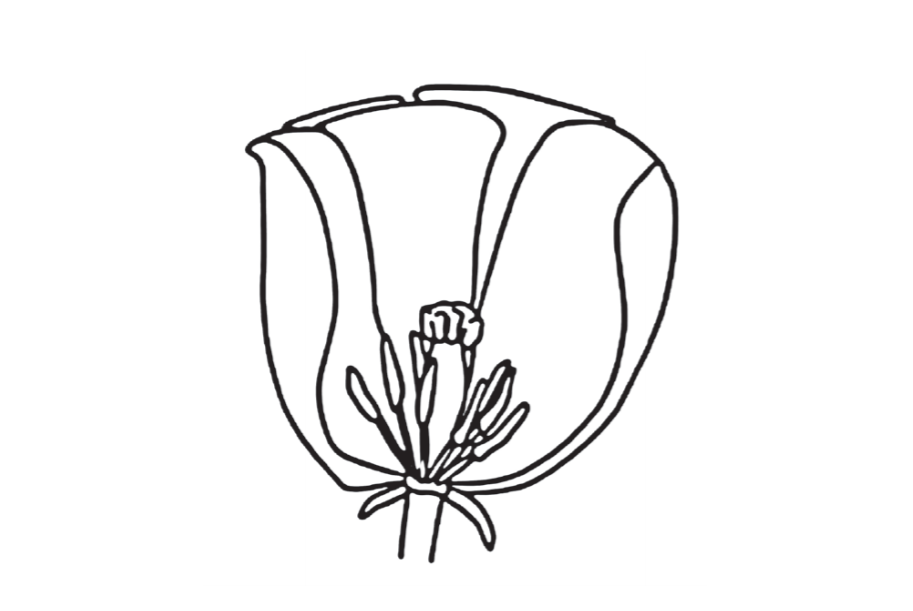



a real tulip (for demonstrations)
However, tulips can also produce seeds. The tiny, small, dark seeds fall to the ground when they are mature, so that new plants can grow from them. In order to form seeds, it is necessary for an egg cell to be fertilized by pollen. The egg lies protected in the flower in the so-called pistil. In addition, there are seed strands in the flower on which the pollen is found. Bees and other insects fly into the flowers to collect sweet nectar from the bottom of the flower. On this occasion, they strip off pollen that remain hanging on the body of the insect. If the insect, then flies to another flower some of the pollen can reach the pistil of the second flower and fertilize the egg. The pistil with the egg cell in it is the female part of the flower, the anther with the pollen is the male part of the flower.

To examine the tulip flower in more detail, the teacher gives the students the following instructions: “Find out which part of the flower in the figure is the female and which the male part! Consider with a partner whether the seeds are from the mother plant or the father plant and justify your answer.”
Solution: The seeds can be formed from any tulip if it has been fertilized by insects with pollen. In doing so the egg cell which has been formed by the plant itself is fertilized. For the resulting seeds, the plant is the mother plant. Since the plant also has pollen, it can also be a parent plant for other seeds which develop on another plant (from another flower). The children should be encouraged to discuss this question, discover the issue of asexual reproduction and ask new questions. These questions can also be discussed in the classroom.
This worksheet should motivate the students to talk about sexual and asexual reproduction (and their differences).
The duration of the discussions and the group size can be varied. Either the children can discuss with each other in pairs or in larger groups of 3-5 children. Some of the tasks can be supplemented by coloring.